Conceptual System Model of Transport and Traffic
| Website: | Hamburg Open Online University |
| Kurs: | MoGoLo - Mobility of Goods and Logistics Systems |
| Buch: | Conceptual System Model of Transport and Traffic |
| Gedruckt von: | Gast |
| Datum: | Dienstag, 20. Januar 2026, 00:29 |
Beschreibung
In this section, you will learn more about the different elements and
relations of the conceptual system model of transport and traffic.
1. Introduction
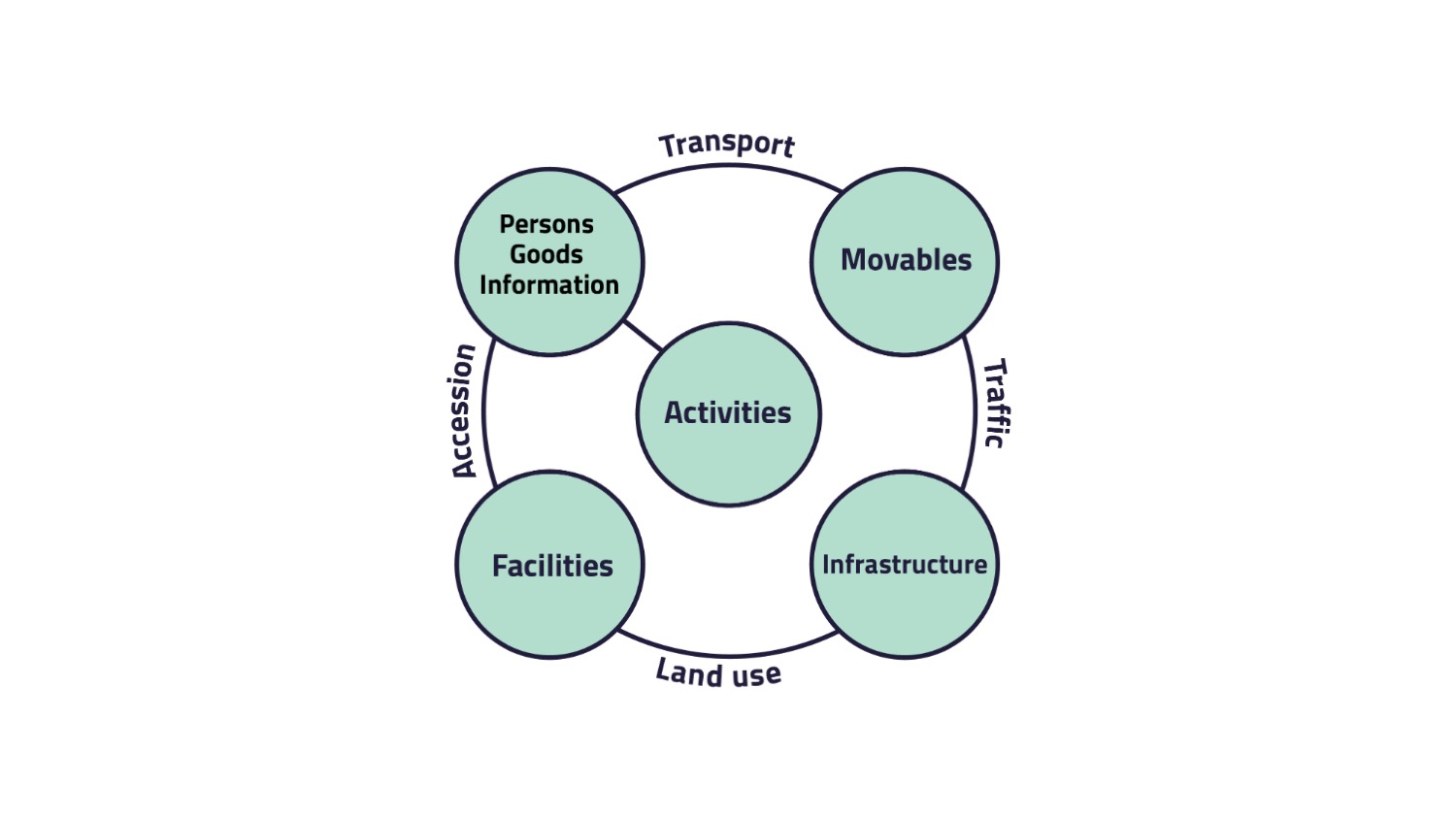
- Moving objects like goods, people, bytes
- Carrying objects (movables) like vessels/vehicles
- Traffic Infrastructure
- Facilities and
- Activities, that drive the system
- Transport
- Traffic
- Land Use
- Accession
If you want to listen to Prof. Dr.-Ing. Heike Flämig explaining the conceptual system model, you can check out the following video.
Now you know of which elements and relations the conceptual system model consists.
1.1. Quiz - Elements of the conceptual system model
2. Activities
On this page, the first element „Activities“ of the conceptual system model will be presented to you.
Activities are driving the system and require the presence of persons and goods at specific facilities that are specially designed to incorporate certain types of activities.
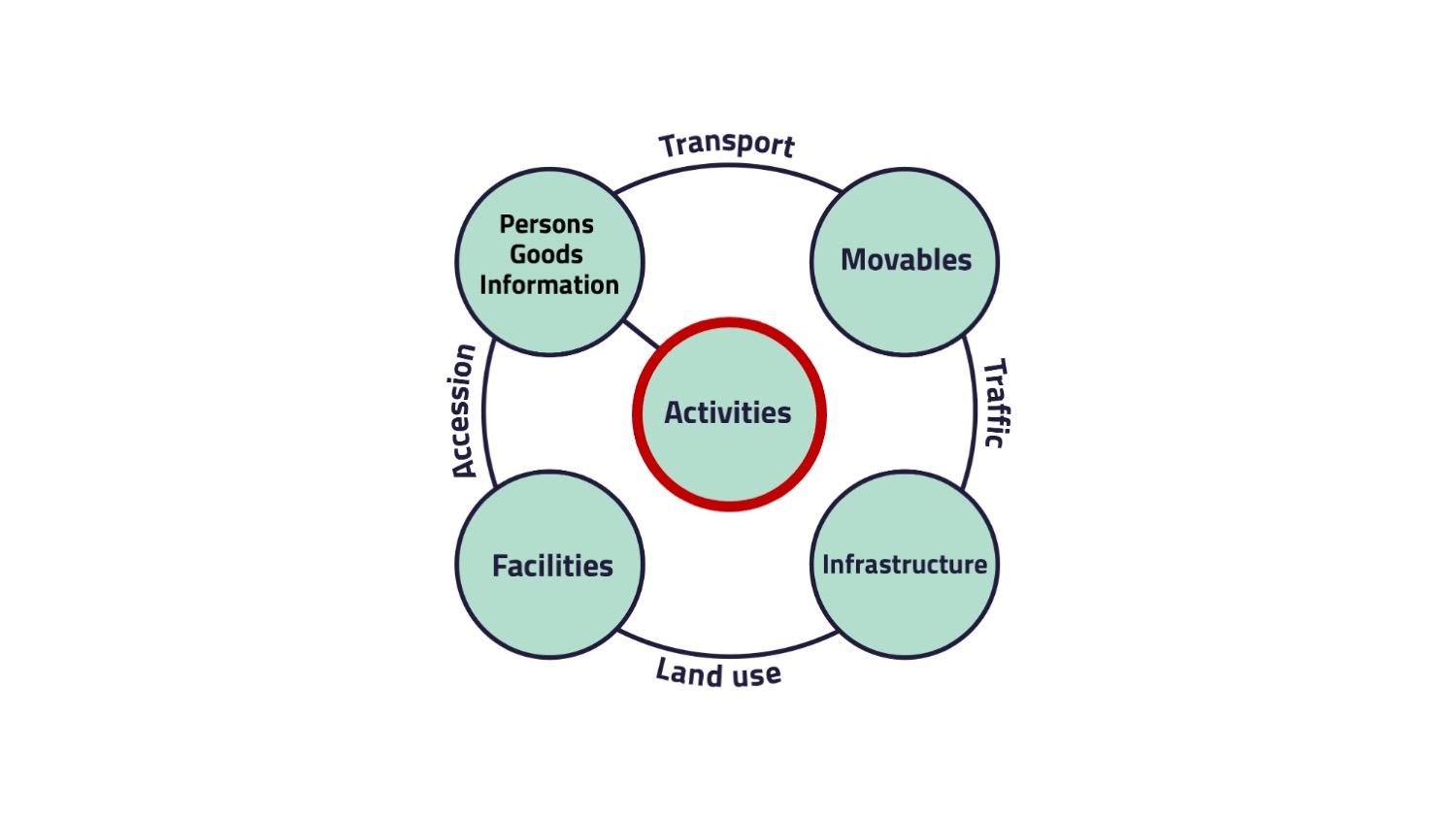
Each such activity creates the demand to ensure accession to the facility where the activity is scheduled to take place. This creates the demand for offering transport options. When the transport option is realised, traffic is generated.
To better illustrate this, here are a few examples for goods movement relevant activities:
- design of products
- procurement strategies
- production concepts
- distribution concepts
- waste management
- re-distribution concepts
- location choice
Literature
3. Persons, goods and information
This page will give you more information about the second element „Persons, Goods and Information“ of the conceptual system model. All are types of flows that occur in logistics.
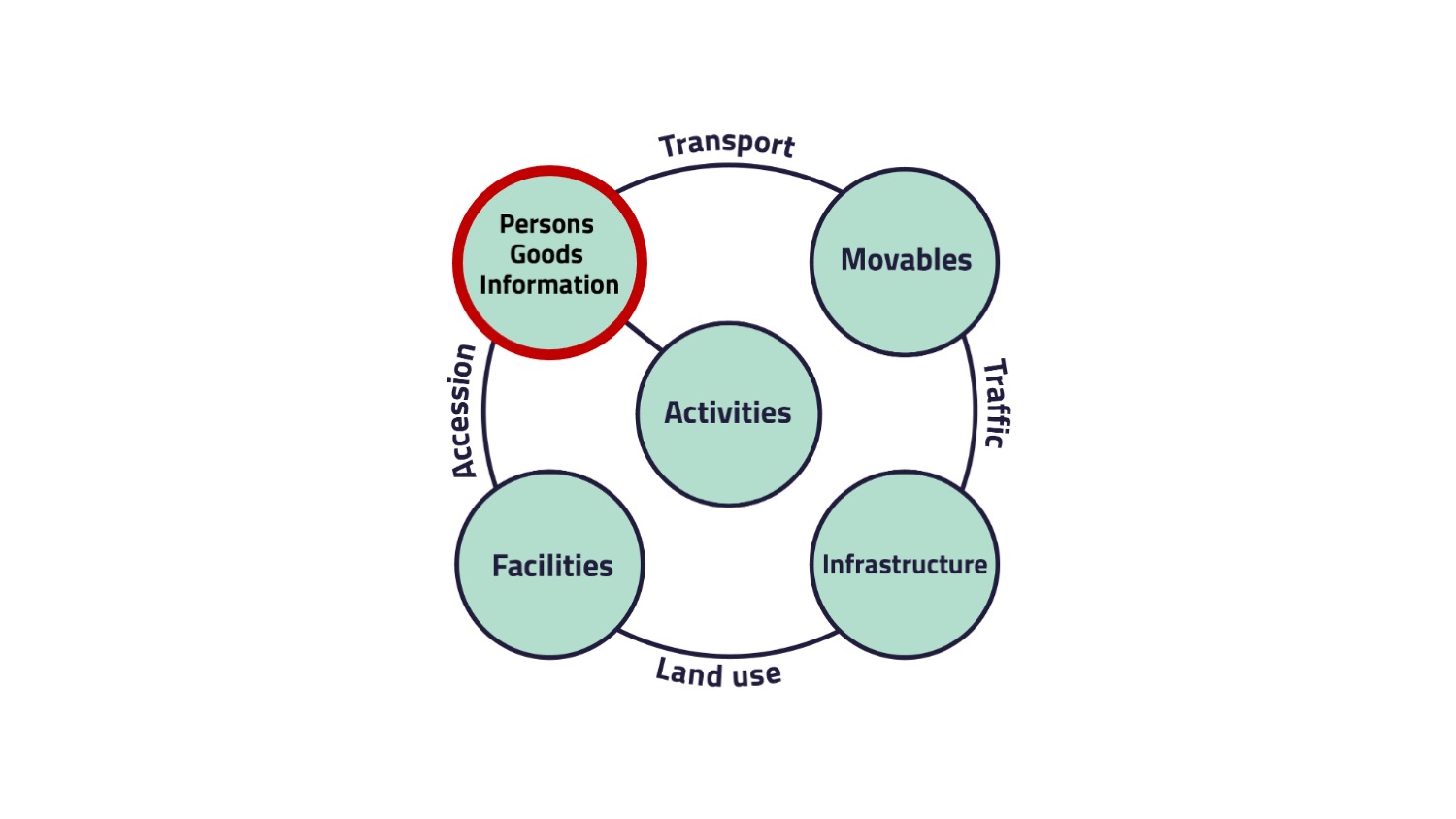
Goods, persons and bytes are the objects of flow.
- Persons as the object of flow are named passengers.
- Goods are often bundled and packed to a packaging unit so the number of moving goods is bigger than the number of shipments.
- Bytes are the object of information flow.
- Information and communications technology (ICT) can change the form and number of objects that flow (e.g. Internet of Things).
- Goods need to be handled (loaded and unloaded), while most passengers are capable of using their legs (built in movement tools) while embarking and disembarking a vehicle or vessel.
- Passengers are intelligent and require much less planning support than (today) the goods which are entirely dependent on someone carrying out the forwarding function for each movement stage.
Transport
A change of position is a change of system state. There are only three system states relating to transport:
- it has not yet left A,
- it has left A but not reached B and
- it has reached B.
Transport is measured either by volume (tonnes) or by transport work (TKT). The transport capacity is the maximum load of a specific vehicle/vessel in tonnes or m³ or the maximum amount of goods in tonnes or m³ that can be moved from A to B per time unit, usually day or week.
3.1. Quiz - Goods and persons
4. Movables
In order to further understand the conceptual system model, we will now deal with the third element „Movables“. In the upcoming topics, the different vehicle types for each means of transport will be explained there.

- A system that supports it relative to its infrastructure. If the supporting medium is the ground the tool is called a vehicle. It is called a vessel if it is mainly supported by air or water.
- A system for forward propulsion by muscle or machine power relative to the infrastructure.
- A system for steering, i.e. change direction.
- A system for braking.
Some examples for movables are:
- trucks / cars,
- trains,
- ships,
- airplanes,
- cargo bikes,
- drones,
- hand truck, etc.
The relation between vehicles/vessels and infrastructure is called traffic.
Traffic
- These movements take place on infrastructure with movables. In other words: Excluding here pedestrians, who only use their legs (manual tools) traffic is an interaction between vehicles/vessels and infrastructure.
- Movements in traffic requires space, and since space is restricted, every traffic system has a maximum capacity.
- Traffic is where most of the resulting metabolism of the system (energy use to drive the system) takes place. Traffic is also the last in the chain of derived demands and therefore the most difficult to change. This must be remembered e.g. when carrying out environmental analysis and suggesting changes of traffic systems.
Traffic flow and capacity are measured in traffic units per hour that are passing a specific segment of infrastructure, such as an airport field or a road crossing (e.g. annual average daily traffic (AADT) in vehicles per day).
Traffic density is measured in the number of traffic units that at a specific point of time is enclosed within a traffic segment.
Traffic occupation is the percentage of available space within a specific segment that is used by vehicles/vessels at a specific point of time, such as the number of quay meters in a harbour used by ships at a certain hour.
4.1. Quiz - Characteristics of traffic
Now that you have learned quite a bit about movables and traffic, you can test your knowledge with this question:
5. Infrastructure
After you got to know more about the three elements before, this chapter will give you more information about the element „Infrastructure“. In the following MoGoLo topic cluster, this will be differentiated depending on the mode of transport.
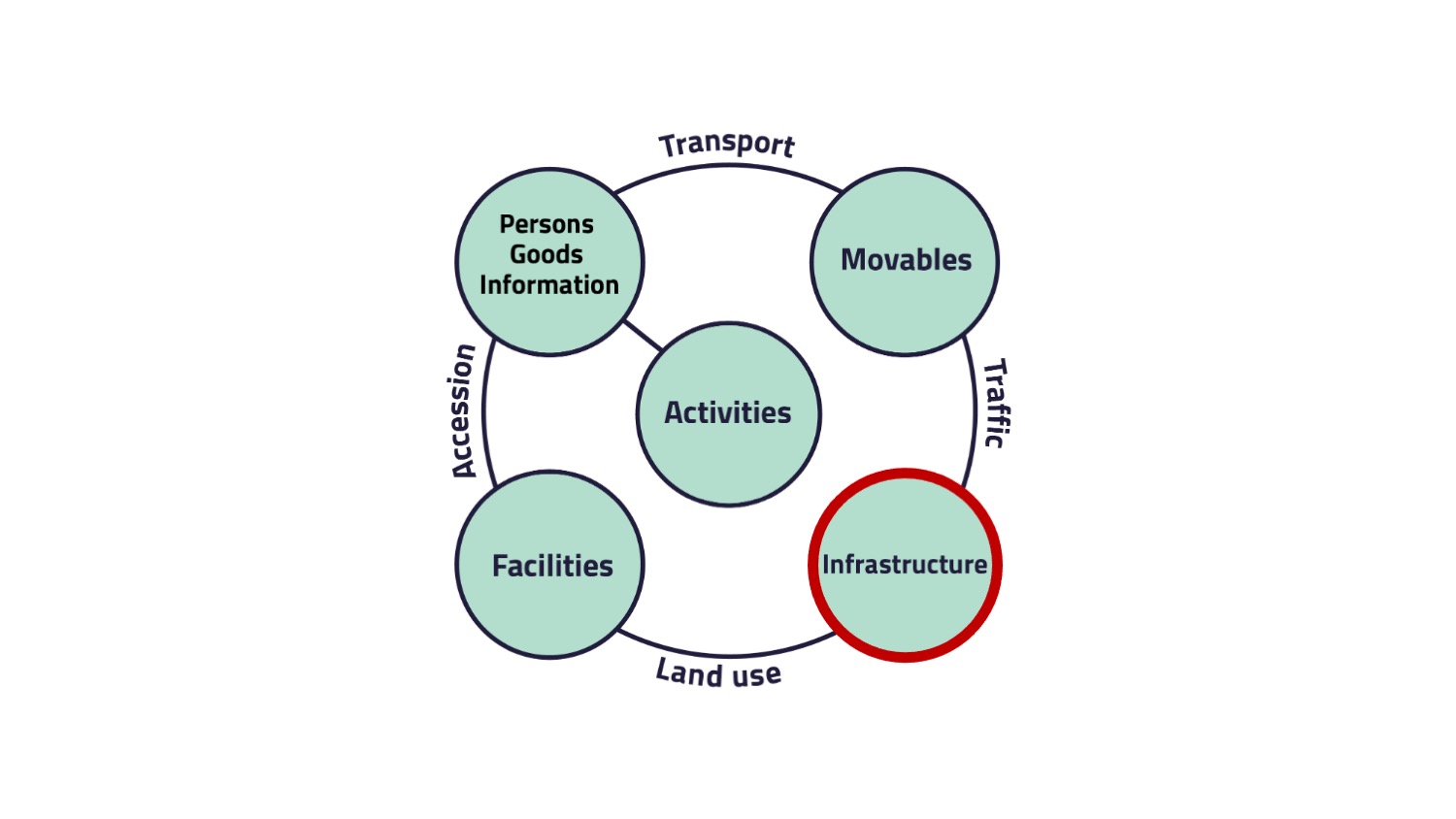
- streets/road
- railways
- waterways
- air corridors
- pipe lines
- data lines
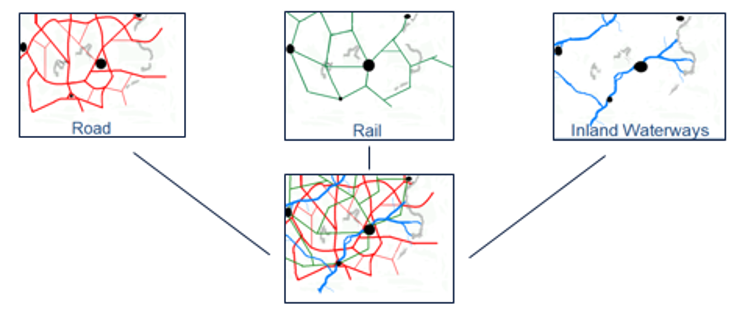
Land use
- is the location of facilities at specific sites.
- is the combined result of public planning and complex market mechanisms.
- may be seen as an interaction between a planned facility and infrastructure in its widest sense.
- results in giving the facility a permanent address.
Literature
6. Facilities
On this page, you will learn something about the last element “Facilities” of the conceptual system model.

Examples for facilities:
- company sides (trade, manufacturing, services)
- facilities for logistics services, transport terminals, micro hubs
- households
- public facilities
Accession
- is an interaction between persons/goods and facilities.
- is the provision of options to move persons and goods between the locations of two facilities A and B at specific times.
- can be just the theoretical possibility of moving between locations at any time, or it could be the planned and even reserved possibility to carry out a transport at a specific point of time. In the first case accession is often measured in required transport time and (if relevant) frequency (time distance between options). In the latter case arrival/delivery within a specific time window is the normal criterion (Just-in-Time).
6.1. Quiz - Elements of the system model
7. Lessons learned
- Knowledge and definition of elements and processes of transport of the system model.
- Understanding of interaction of transport and traffic, demand and supply on different layers of the transport system.
8. Literature
Perspective. In: Eurocase - Mobility, Transport and Traffic: in the perspective of
growth, competitiveness, employment. Paris, France.